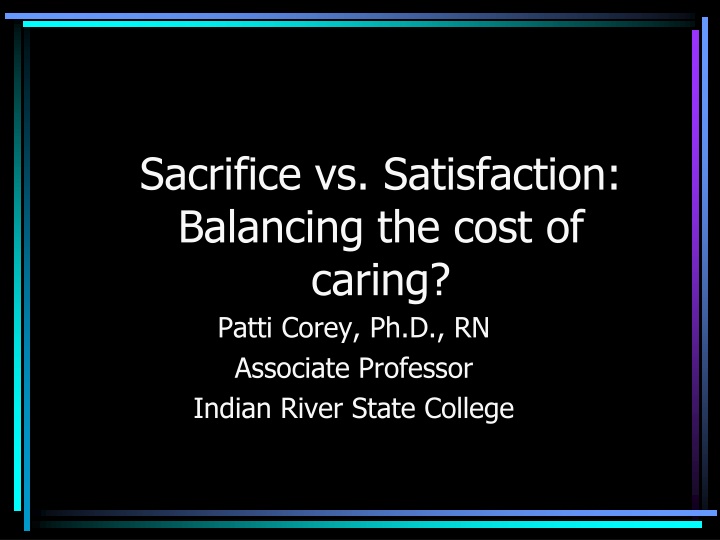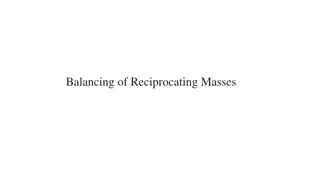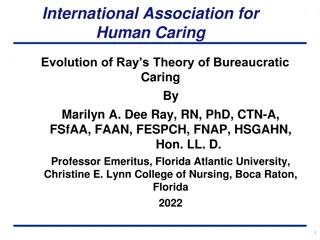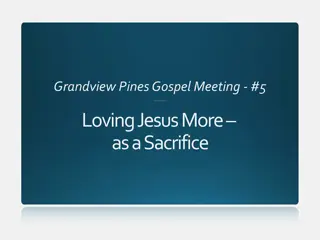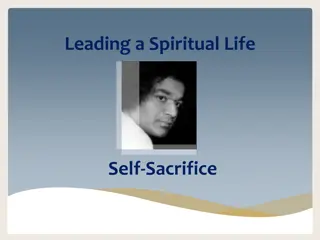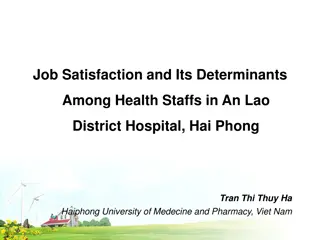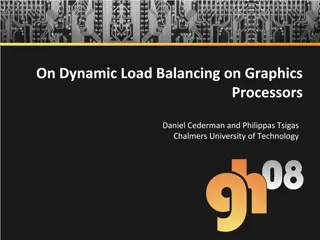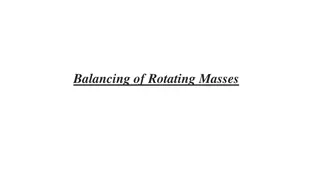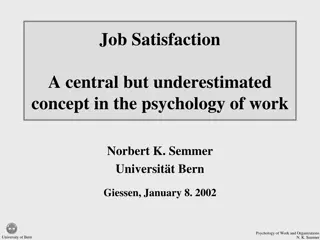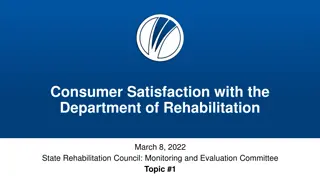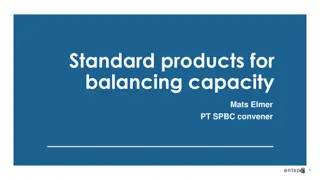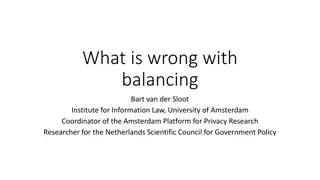The Cost of Caring: Balancing Sacrifice and Satisfaction in Teaching
Teachers face the challenge of balancing sacrifice and satisfaction in their caregiving roles. Juggling multiple responsibilities can lead to burnout, affecting personal well-being and performance. Despite the passion and compassion that drive educators, achieving balance remains a daunting task. Vulnerability to burnout, neglect of personal needs, and the risk of stress-related issues highlight the importance of finding equilibrium in the demanding field of education.
Uploaded on Sep 10, 2024 | 2 Views
Download Presentation

Please find below an Image/Link to download the presentation.
The content on the website is provided AS IS for your information and personal use only. It may not be sold, licensed, or shared on other websites without obtaining consent from the author.If you encounter any issues during the download, it is possible that the publisher has removed the file from their server.
You are allowed to download the files provided on this website for personal or commercial use, subject to the condition that they are used lawfully. All files are the property of their respective owners.
The content on the website is provided AS IS for your information and personal use only. It may not be sold, licensed, or shared on other websites without obtaining consent from the author.
E N D
Presentation Transcript
Sacrifice vs. Satisfaction: Balancing the cost of caring? Patti Corey, Ph.D., RN Associate Professor Indian River State College
Questions Why are you here? What do you expect to gain from being here? Do you plan to use the knowledge/ experiences you glean from this event after you leave? Why DO you do what you DO?
Life is a challenge Contemporary issues: Natural disasters, war/conflicts, poverty, crime, economic issues, politics Work-related/organizational issues Personal issues
Sacrifice vs. Satisfaction: Core Issues Teachers are caregivers and what you give the most is YOURSELF. (All) Human need is infinite Fulfilling multiple roles can be psychologically conflicting: Counselor, planner, instructor, mentor, delegator, mediator, disciplinarian Leader, scholar, juggler, pseudo-parent A great deal of energy is used balancing these various roles.
So why do we do it? Passion Drive/motivation Compassion Satisfaction: The motivation to help others is shaped by the satisfaction derived from the helping process
Some days I dont want to do it. Some days, I feel like I can t do it. Is achieving balance possible?
Music educators can be particularly vulnerable to burnout because of the many different hats we must wear in a given day. These proverbial hats can tax the energy of even the most enthusiastic teachers. It isn't because we are teaching too much, it s because there are just too many things to do. SBO, Oct., 2009
Self Sacrifice Problems occur when people invest a great deal of energy into a problem/situation. Personal needs become neglected: Physical/emotional Values and goals Poor performance, frequent absenteeism, early retirement Stress becomes burnout.
The measure of who we are is what we do with what we have. Vince Lombardi
Environment Work Psychological Physical You
Physical Work Psychological
Identification and Prevention The human spirit is remarkably resilient Exposure to a stressor does not mean that one will experience psychological or job- related difficulties: Mind/body connection Self care? Behavioral red flags: Eating/sleeping patterns Substances Excessive worry/nervousness Procrastination
Sacrifice = Stress An autonomic chemical reaction is triggered by a real or perceived threatening or harmful situations; The hypothalamus sets off an alarm system; The adrenal glands release adrenaline and cortisol: Adrenaline increases heart rate (fight/flight) Cortisol-our natural alarm system that controls mood, motivation, and fear Causes or exacerbates health conditions
Top Five Health Risks 1. Heart disease-high blood pressure- heart attack: Increased heart rate releases cholesterol and triglycerides into bloodstream Constriction of vessels Increased respirations Negative emotions can trigger heart attack, arrhythmia, sudden death
Top Five 2. Obesity-Stress increases levels of cortisol that promotes fat deposits in the abdomen (A risk factor for diabetes and heart disease.) Cortisol increases appetite/cravings for sugary and fatty foods Stress Eat More Stress
Top Five 3. Diabetes-Alteration in glucose metabolism, possible predisposition, prevention is possible; Cortisol/adrenaline help boost energy when needed. Stress mimics this process. Excessive stress affects glucose control. Impulsive eating Management is complicated by negative emotions, impaired thinking/decision making caused by stress.
Top Five 4. Depression, Anxiety, Insomnia When brain chemicals work normally they regulate sleep, appetite, energy, and permit expression of normal moods and emotions. Elevated hormones (cortisol) and reduced levels of other neurotransmitters are linked to depression. When a stress response fails to shut off depression, anxiety, insomnia can occur.
Top Five 5. Alzheimer s Disease Short term stress elevates cortisol levels in the blood stream. Improves short-term memory and allows the body to adapt. Long-term stress leads to prolonged elevated levels of cortisol. Impairs communication among brain cells, slows production of new brain cells causing degeneration.
Sacrifice = Stress/burnout Early research found that patients with Alzheimer s disease had elevated levels of cortisol in their blood. Correlated with the degree of memory impairments. People with uncontrolled stress are 2-3 more times likely to be diagnosed with Alzheimer s disease.
Sacrifice causes a downward spiral Enthusiasm becomes depleted Easily distracted/poor concentration Cut corners Feel tired all the time Avoid talking about work Family, friends, and coworkers are neglected We neglect our own needs Feel hopeless Lose the ability to appreciate humor
Satisfaction Achieving satisfaction involves being able to fully appreciate what someone is experiencing. It is based on a passionate connection... Incorporating understanding, a helping attitude, and patience combined with a recognition of our own limitations.
The first best-kept-secret of total success is that we must feel love inside ourselves before we can give it to others. Dr. Denis Waitley
You are Number One! Self care: Re-establish habits that promote emotional and physical resilience: Back to basics: Exercise, diet (watch excess sugar, salt, fat) Avoid addictive substances-alcohol, nicotine, caffeine Adequate rest and sleep Reconnect with family and friends Acceptance of yourself and others Practice tolerance and forgiveness
Transform Sacrifice into Satisfaction Everyone has multiple demands in life; take an inventory. Identify and avoid your triggers. Self care: eat, laugh, play Rebalance your workload/ask for help. Delegate: Speak up and say No : Remember-no one can read your mind Be assertive Create a transition ritual from work to home
Sacrifice to Satisfaction Accept what you cannot change: Don t try to control the uncontrollable Attitude/self talk Communicate Take charge of your environment.
Sacrifice to Satisfaction Practice the four A s 1. AVOID 2. ALTER Change the situation 3. ADAPT 4. ACCEPT Change your reaction
Folks are usually about as happy as they make their minds up to be. Abraham Lincoln
Achieving Balance Don t neglect your own needs and interests Don t: Blame others Look for a new job, buy a new car, get a divorce, or make major life decisions Don t commiserate with others Work harder and longer Self-medicate Watch the news
Be Satisfied True potential is uncovered by living: Don t be your own worst critic Each milestone provides experience that helps conquer the next obstacle. Believe in yourself.
Youve always had the power- you just had to learn it for yourself. Glinda the Good Witch of the North-Wizard of OZ
References: American Heart Associationhttp://www.heart.org/HEARTORG/GettingHealthy/Humor-helps-your- heart-How_UCM_447039_Article.jsp#.Vo_mh_krKUk Figley, C.R., Kelbert, R.J. (1995). Beyond the victim ; Secondary traumatic stress. In R.J. Kelbert, C.R. Figley, and B. Gerson (Eds.) Beyond trauma: Cultural and societal dynamics. NY:Pleneum Press Huggard, P. (2003). Compassion fatigue: How much can I give? Medical Education, 37, 163-164. Joinson, C. (1992). Coping with compassion fatigue. Nursing 92, 116-121. Kessler, R.C., Sonnega, A, Bromet, E., Hughes, M., Nelson, C. (1995). PTSD in the National Comorbidity survey. Archives of General Psychiatry, 52, 1048-1059 Koerner, J. (1995). The essence of nursing-Creative compassion. Journal of Professional Nursing, 11(16), 317-366. SBO Magazine (2009, October)
